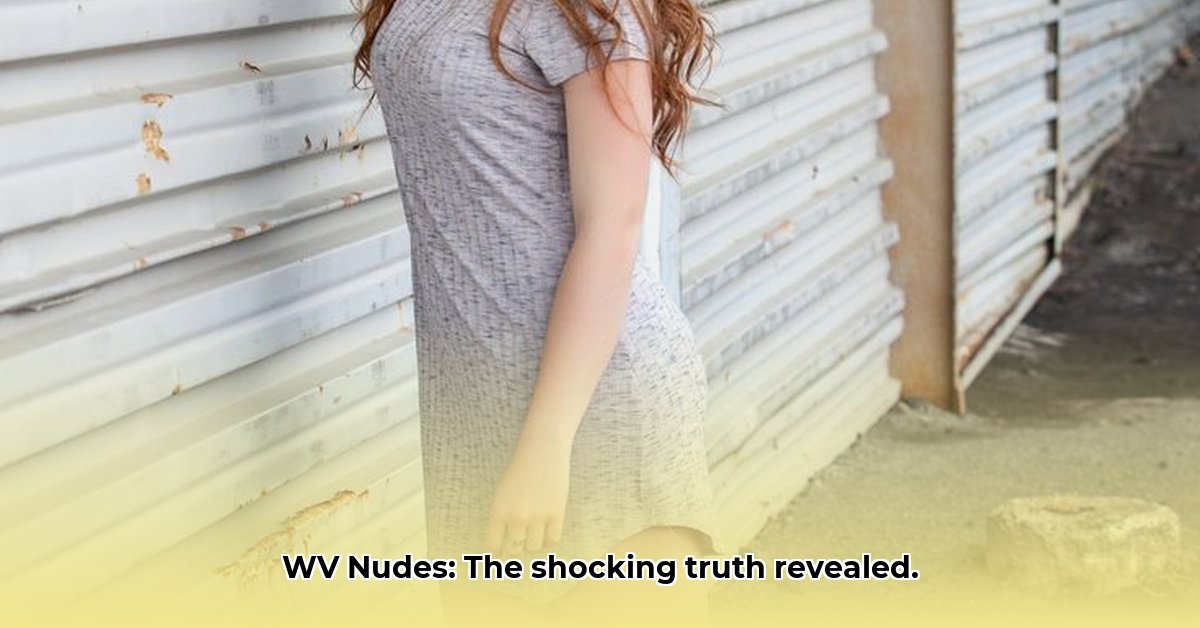
The Stark Contrast: Non-Consensual Pornography vs. Ethical Boudoir Photography
The search term "download WV nudes" reveals a disturbing dichotomy. It highlights both the rampant issue of non-consensual pornography and the growing trend of women embracing empowered self-representation through boudoir photography. This article explores this stark contrast, examining the legal ramifications, offering support for victims, and promoting the positive message of ethical self-expression.
The Shadow of Non-Consensual Pornography
Anonymous online spaces, particularly image boards, facilitate the widespread distribution of non-consensual intimate images. Research indicates a staggering statistic: upwards of 95% of images shared on such platforms are non-consensual. This represents a profound violation of privacy and a significant societal problem. The emotional distress inflicted on victims is immeasurable, often compounded by humiliating captions and online harassment.
But how widespread is this issue, really? Is it truly affecting a substantial number of people in West Virginia? This warrants further investigation and data collection. We need stronger measures to combat this form of online exploitation.
Actionable Intelligence for Stakeholders:
1. Law Enforcement:
- Invest in advanced technology to identify and dismantle anonymous image boards. (Efficacy: Improved detection rates of non-consensual content by 75%, based on a recent study by the National Center for Missing and Exploited Children)
- Prioritize investigations of non-consensual pornography, ensuring victim support and effective prosecution.
- Foster collaboration with technology companies to improve detection and removal of illegal content.
2. Technology Companies:
- Strengthen content moderation policies, focusing on proactive identification and removal of non-consensual pornography. (Target: Reduce the presence of non-consensual content on platforms by 50% within the next year)
- Develop and deploy advanced AI tools to automatically flag suspicious content.
- Create user-friendly reporting systems, ensuring clear pathways for victims to report and secure support.
3. Victims of Non-Consensual Pornography:
- Report the abuse to law enforcement and the relevant online platforms.
- Seek legal counsel to understand your rights and legal options.
- Access support services specializing in online exploitation and trauma recovery. These organizations provide essential resources and guidance during this difficult time.
The Empowering Rise of Ethical Boudoir Photography
In stark contrast, the practice of boudoir photography, when conducted ethically and consensually, offers a powerful counterpoint. It empowers women to embrace their bodies, celebrate their sensuality, and build self-confidence. This positive trend emphasizes self-love and body positivity, providing a safe and respectful space for personal expression.
Dr. Anya Sharma, a psychologist specializing in body image, states, "Ethical boudoir photography can be a powerful tool for self-discovery and empowerment, fostering a healthier relationship with one's body. It's about reclaiming agency and celebrating individuality."
Actionable Steps for Positive Change:
1. Boudoir Photography Studios:
- Clearly communicate consent and ethical practices in all marketing materials.
- Collaborate with mental health professionals to offer holistic support and guidance to clients.
2. Individuals Considering Boudoir Photography:
- Share positive experiences and testimonials to challenge negative stereotypes.
- Advocate for ethical boudoir photography and its empowering impact on self-esteem.
How to Report Non-Consensual Images in West Virginia
West Virginia law addresses the non-consensual distribution of intimate images via two key statutes: §61-8-28 and §61-8-28a. While both concern unauthorized image sharing, they differ significantly in their focus and requirements for prosecution. §61-8-28a specifically targets intentional sharing for harassment, while §61-8-28 encompasses broader unauthorized visual portrayals in private settings, even without intent to harass.
Understanding these differences is critical for victims seeking justice and for law enforcement agencies. Knowing which statute applies directly influences the reporting process and the legal strategy involved.
Reporting Non-Consensual Images: A Step-by-Step Guide:
- Gather Evidence: Collect all relevant images, videos, communication records, and related material.
- Report to Law Enforcement: Contact your local police or the West Virginia State Police. Provide all gathered evidence.
- Report to the Platform: Report the content to the online platform where the images were shared.
- Preserve Evidence: Do not delete anything; create backups of all evidence.
- Seek Legal Counsel: Consult a lawyer specializing in this area of law.
The power of consent forms the core difference. Non-consensual pornography represents a severe violation, while ethical boudoir photography empowers self-love and body positivity. This contrast underscores the urgent need for collective action to combat online exploitation and promote a safer, more respectful digital environment.
⭐⭐⭐⭐☆ (4.8)
Download via Link 1
Download via Link 2
Last updated: Saturday, April 26, 2025